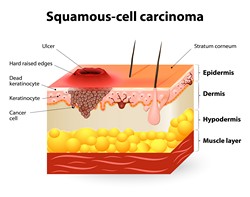Oral cancer prevention and vitamin A
In previously conducted large clinical trials, VA analogues (retinoids) did not prove to be a promising chemoprotector against OSCC. However, the function of retinoids during transition of oral tissues from precancerous to cancerous state is poorly understood and this is a hindrance to the trials as well as effective therapy. Preliminary studies showed that expression of the retinoid receptor RARβ2 is lost as OSCC progresses. It is linked to a novel role of RARβ2 in replicative senescence, which controls cancer associated unlimited cell division. The goal of the EU-funded RARBETA2 IN OSCC (Understanding the functional role of retinoic acid receptor beta2 in the development of oral cancer) project was to study the function of retinoid receptors during oral cancer development. Project partners used a unique panel of cell cultures derived from a variety of oral potentially malignant lesions (OPML). The cells in the panel display a variety of proliferative lifespans with some undergoing replicative senescence and others being immortal. The cells differ in their expression of RARβ2 and were ideally suited to investigate the function of the receptor. Investigators found that down-regulation of RARβ2 in most immortal OPML cells was due to methylation of CpG islands in the promoter. Mortal OPML cells retained RARβ2 expression. This finding correlated with observations in the original tissues. In some cell lines, treatment with the azacytidine-based drug for demethylation induced RARβ2 expression de novo. In the cells which re-expressed RARβ2, treatment with a combination of retinoic acid and azacytidine induced growth arrest and senescence in the DNA damage checkpoint G2M. This study has demonstrated that the response to treatment is linked to the ability of OPML cells to re-express RARβ2 besides other factors. During treatment, patient samples have to be assessed for all of these factors to accurately predict the response to therapy with retinoid and demethylation agents.
Keywords
Oral squamous cell carcinoma, retinoids, RARBETA2 IN OSCC, retinoid receptor, demethylation, azacytidine, G2M

